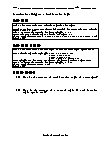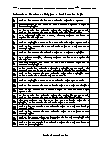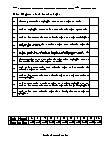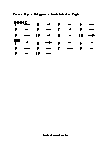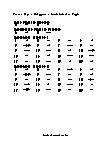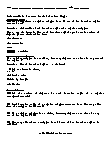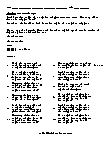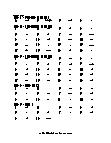Each Interior Angle Worksheets
What is the Interior Angle Theorem? We all know that polygons are of different shapes and sizes. They can be regular and irregular, or convex and concave. When these polygons meet at a point, they form an interior angle. Ths angle is defined as the angle present in the inside boundary of the polygon. We can easily find this angle by using a formula: S = (n – 2) * 180. Where n indicates the number of sides, a given polygon and s indicates the sum of all the interior angles of the polygon. The alternate interior angle is formed when a transversal passes through two lines. These angles are present inside the two lines and on opposite sides of the transversal. These angles typically form a z-pattern. The alternate angle theorem states that if two parallel lines are crossed or cut by a transversal, then the alternate interior formed will be congruent. First, we will have to identify the pair of alternate angles. Lets take for example a 58 degree angle and another angle that we call y that are present inside the transversal, so these are our alternate interior angles. Next, we can see that angel x and angle 58 form a straight line. Since a straight line measures 180 degrees, so Angle x + 58 = 180 and 180 – 58 = 122. Angle x = 122 degrees. Lastly, we know that the alternate interior angle measures the same. Angle x and angle z are of 122 degrees.
-
Basic Lesson
Guides students through the determine the interior and central angles of a polygon. What is the measure of a central angle if each interior angle equals 144°? Given polygon has ten sides and formula for finding central angle: 360/n Here n is number of sides of the given polygon, n = 10 So, by using formula: 360/10 = 36°.
View worksheet -
Intermediate Lesson
Demonstrates how determine the interior angles of polygons. What is the measure of each interior angle in a regular four sided polygon?
View worksheet -
Independent Practice 1
A really great activity for allowing students to understand the concepts of the Each Interior Angle of Polygons. If a regular decagon, how many degrees are there in any one of its angles?
View worksheet -
Independent Practice 2
Students use Each Interior Angle of Polygons in 20 assorted problems. The answers can be found below. How many sides does a regular polygon have if one of its interior angles measures 150?
View worksheet -
Homework Worksheet
Students are provided with 12 problems to achieve the concepts of Each Interior Angle of Polygons.
View worksheet -
Skill Quiz
This tests the students ability to understand Each Interior Angle of Polygons.
View worksheet -
Intermediate Lesson
Demonstrates the concept of advanced skill while solving Each Interior Angle.
View worksheet -
Independent Practice 1
A really great activity for allowing students to understand the concepts of the Each Interior Angle.
View worksheet -
Independent Practice 2
Students use Each Interior Angle in 20 assorted problems. The answers can be found below. If a regular polygon has 20 sides, how many degrees are there in any one of its angles?
View worksheet -
Homework Worksheet
Students are provided with 12 problems to achieve the concepts of Each Interior Angle.
View worksheet
Light Bulb Question
How many classical geometers does it take to change
a light bulb?
Answer: None. You can't do it with a straight edge and a compass.
